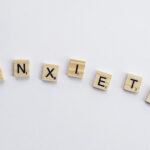Anxiety- a common mental disorder which many people suffer from all over the world. It is one of the most prevalent psychological disorders in the world.
Anxiety can occur in different situations of excitement or anger and some amount of it is normal. However, when the intensity of such feelings of anxiety starts to peak, affecting your daily life activities, it is known as an anxiety disorder.
Anxiety can be of many kinds such as:
- Social Anxiety
- Separation Anxiety
- Generalized Anxiety
- Phobias
- Obsessive Compulsive Disorder
- Panic Disorders
However, not all of these are considered to be the same.
Though it is possible to be diagnosed with both anxiety and social anxiety at the same time, they are not essentially the same thing.
What is Anxiety and Social Anxiety?
Anxiety is a future oriented response which involves both cognitive and emotional components, in which an individual feels apprehensive, tense and uneasy about something.
People suffering from anxiety go to great lengths to avoid situations that might provoke such emotional responses.
Social anxiety, on the other hand, is a marked and intense fear of social situations in which the individual may be scrutinized or judged by others. Some people may experience social anxiety only in particular situations. Regardless of when they might experience such feelings, it is centred on a desire to avoid humiliation or embarrassment.
Social anxiety is widely experienced by children more than adults, because of past events rooted in their childhood.
Differences-
- Though the types of thought traps can be similar, it is the thought content that distinguishes anxiety from social anxiety.
- People with anxiety often tend to worry about a range of topics. Worries may be about major life issues—such as health or finances—but they are also about many minor, day-to-day stresses that others would tend not to perceive as intensely.
- People with social anxiety disorder, on the other hand, worry about things such as meeting new people, being observed, and performing in front of others (for example, speaking up in class or playing an instrument in a band). Their thought content typically centers on negative evaluation and rejection.
For instance, someone with social anxiety disorder may have difficulty starting a conversation at a work happy hour for fear that they will appear anxious or say “something stupid,” and be ridiculed by their colleagues.
Similarities-
Though anxiety and social anxiety are distinct problems, there exists a number of similarities between the two.
- Both are characterized by persistent anxiety that is excessive or disproportionate to an actual threat.
- Moreover, people with anxiety and social anxiety experience physical symptoms when they are in a fear-provoking situation.
- In many cases catastrophizing (imagining worst-case scenarios)—is also central to both types of anxiety disorders as well.
- The treatment for both these conditions is essentially the same.
The bottom line: Both these conditions can significantly reduce a person’s quality of life. Hence, it is important for people with these conditions to seek treatment. Psychotherapy, medications and social support can reduce uncomfortable symptoms and allow people to live their lives in the best possible way.
Sources-
- https://www.hhs.gov/answers/mental-health-and-substance-abuse/what-are-the-five-major-types-of-anxiety-disorders/index.html
- https://www.verywellmind.com/difference-between-gad-and-social-anxiety-disorder-1393009
- https://www.hhs.gov/answers/mental-health-and-substance-abuse/what-are-the-five-major-types-of-anxiety-disorders/index.html

